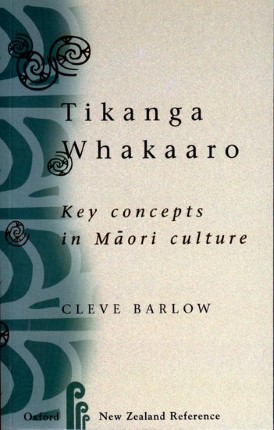
Tikanga Whakaaro: Key Concepts in Māori Culture – Cleve Barlow (1991)

Cleve Barlow’s 'Tikanga Whakaaro' is an early bilingual publication in Te Reo Māori and English that provides explanatory notes of seventy Māori concepts which Barlow contends are ‘important for understanding Māori culture as it is practiced today, and concepts which are likely to be relevant in the future’.
Publication details
Barlow, C. Tikanga Whakaaro: Key Concepts in Māori Culture. Auckland: Oxford University Press, 1991.
About the book
Cleve Barlow (1943-2008; Ngāpuhi) discusses important Māori concepts such as aroha, mana and tapu defining each term and explaining its significance with reference to tradition, custom, myth and ritual, as well as present-day understandings. In Tikanga Whakaaro Barlow drew upon his knowledge of the traditional Whare Wananga and modern usage of Māori language to provide depth to each description. This publication remains an important introductory text that contextualises a broad range of tikanga practices allowing the reader to begin to appreciate Māori beliefs and values.
Barlow attended Auckland Teachers College and graduated with a Teaching Diploma in 1977. He then attended Brigham Young University in Hawaii and graduated with a B.A. in English in 1978, M.A. in Linguistics in 1981 and a PhD in Psychology in 1983. He then returned to New Zealand and was appointed Lecturer in Anthropology at the University of Auckland in 1983 and also lectured in the Māori Studies Department. Barlow’s scholarly publications include a number of papers in linguistics, cognitive psychology and computing and the first grammar of Māori language written in Māori.
Further information
This publication is part of the series Te Takarangi: Celebrating Māori publications - a sample list of 150 non-fiction books produced by a partnership between Royal Society Te Apārangi and Ngā Pae o te Māramatanga.
